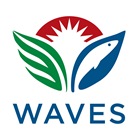Comparing the cost effectiveness of nature-based and coastal adaptation: A case study from the Gulf Coast of the United States
This study applies a quantitative risk assessment framework to assess coastal flood risk (from climate change and economic exposure growth) across the United States Gulf of Mexico coast to compare the cost effectiveness of different adaptation measures. These include nature-based (e.g. oyster reef restoration), structural or grey (e.g., seawalls) and policy measures (e.g. home elevation). This study demonstrates that the cost effectiveness of nature-based, grey and policy measures can be compared quantitatively with one another, and that the cost effectiveness of adaptation becomes more attractive as climate change and coastal development intensifies in the future. It also shows that investments in nature-based adaptation could meet multiple objectives for environmental restoration, adaptation and flood risk reduction.
